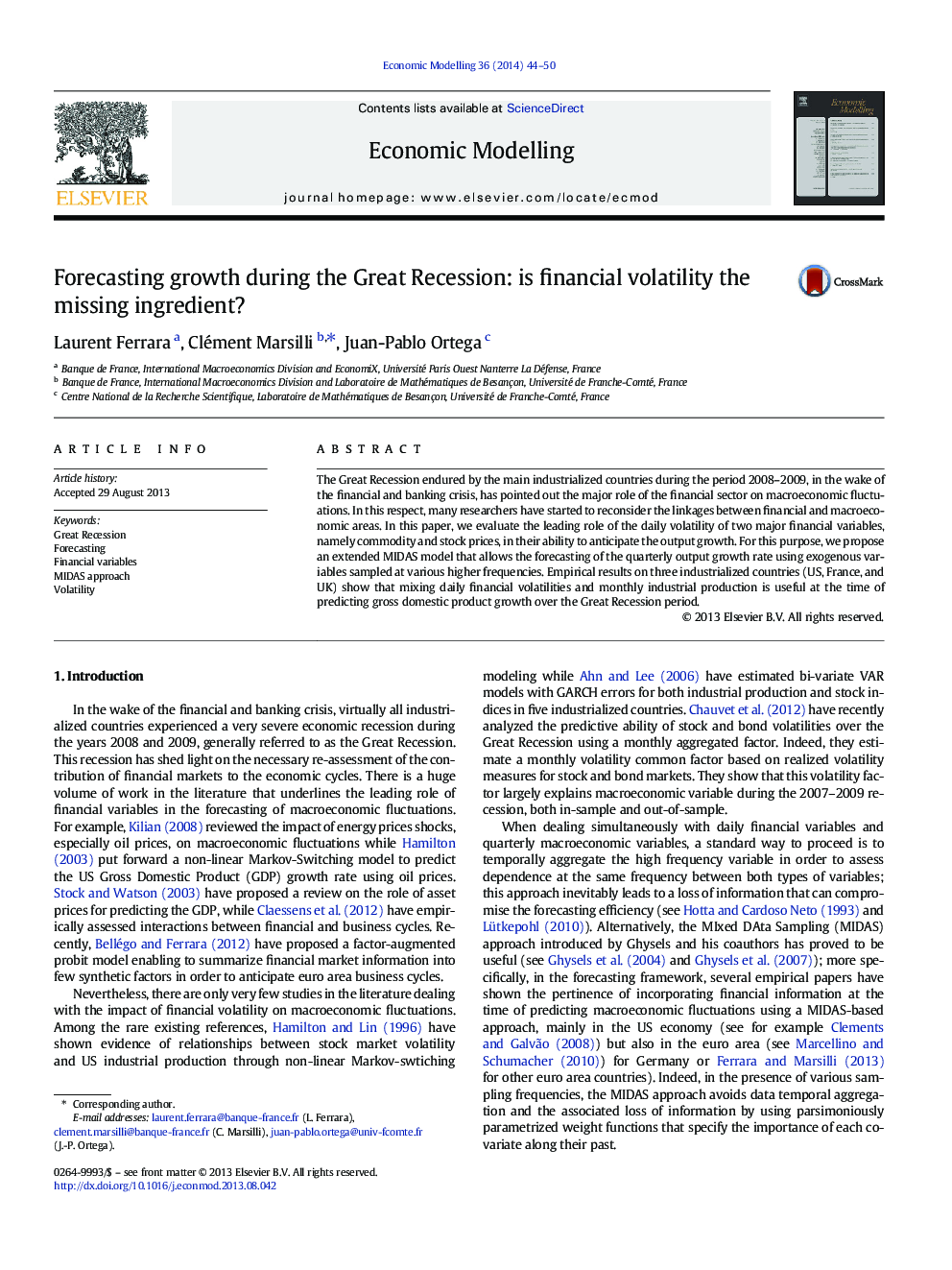| Article ID | Journal | Published Year | Pages | File Type |
|---|---|---|---|---|
| 5054270 | Economic Modelling | 2014 | 7 Pages |
Abstract
The Great Recession endured by the main industrialized countries during the period 2008-2009, in the wake of the financial and banking crisis, has pointed out the major role of the financial sector on macroeconomic fluctuations. In this respect, many researchers have started to reconsider the linkages between financial and macroeconomic areas. In this paper, we evaluate the leading role of the daily volatility of two major financial variables, namely commodity and stock prices, in their ability to anticipate the output growth. For this purpose, we propose an extended MIDAS model that allows the forecasting of the quarterly output growth rate using exogenous variables sampled at various higher frequencies. Empirical results on three industrialized countries (US, France, and UK) show that mixing daily financial volatilities and monthly industrial production is useful at the time of predicting gross domestic product growth over the Great Recession period.
Related Topics
Social Sciences and Humanities
Economics, Econometrics and Finance
Economics and Econometrics
Authors
Laurent Ferrara, Clément Marsilli, Juan-Pablo Ortega,
